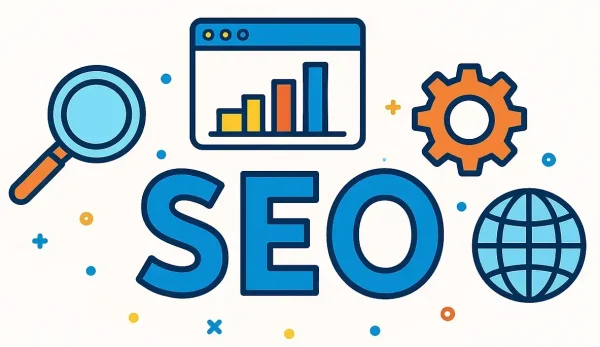sponsored and SEO Link Attributes
A complete SEO guide with a ready-made list of practices for using rel=’sponsored’, rel=’nofollow’, and rel=’ugc’ in HTML links to comply with Google guidelines and improve .
Best Practices for rel sponsored
This comprehensive guide provides a ready-made list of best practices for using rel="sponsored" and other important HTML link attributes like rel="nofollow" and rel="ugc".
It is designed for webmasters, Search Engine Optimization professionals, and content creators who want to ensure their outbound links comply with Google guidelines while maintaining strong SEO performance.
You will learn when and how to apply each attribute, see real-world examples, and understand the impact on search engine crawling and indexing.

Understanding rel sponsored in SEO
The rel="sponsored" attribute is an HTML link attribute used to identify links that are part of paid promotions, advertisements, or sponsorships.
Google introduced this attribute to help webmasters clearly signal that a link is not editorially given but is instead a result of a commercial arrangement.
By marking such links correctly, you maintain transparency with search engines and avoid potential penalties for unnatural link building.
This attribute is part of a broader set of link relationship values that also includes rel="nofollow" and rel="ugc", each serving a specific purpose in SEO link management.

Why Google Prefers rel sponsored
Before the introduction of rel="sponsored", the common practice was to use rel="nofollow" for paid links. While this is still acceptable, Google now recommends using rel="sponsored" for clarity.
This helps Google’s algorithms better understand the nature of the link and its relationship to your site.
By using the correct attribute, you provide more accurate signals, which can improve the trustworthiness of your site in the eyes of search engines.
This is especially important for sites that engage in affiliate marketing, sponsored content, or any form of paid link placement.
When to Use rel sponsored
You should apply rel="sponsored" to any outbound link that is part of a paid arrangement.
This includes affiliate links, sponsored posts, banner ads, and any link where compensation is involved.
The attribute should be placed within the anchor tag of the link, alongside the href attribute. For example:
<a href="https://partnerwebsite.com" rel="sponsored">Visit Our Sponsor</a>Using this attribute correctly ensures that search engines do not interpret the link as a natural editorial endorsement.
This protects your site from being associated with link schemes and maintains compliance with Google’s Webmaster Guidelines.
Comparing rel|sponsored|nofollow|ugc
While rel="sponsored" is specifically for paid links, rel="nofollow" and rel="ugc" serve different purposes.
The table below compares these attributes to help you decide which to use in different scenarios.
| Attribute | Purpose | Example Use Case | Google Recommendation |
|---|---|---|---|
| rel=”sponsored” | Identifies paid or sponsored links. | Affiliate links, sponsored posts, paid banners. | Preferred for all paid link scenarios. |
| rel=”nofollow” | Prevents passing link equity without specifying reason. | Untrusted sources, links you don’t endorse. | Acceptable for paid links but less specific than sponsored. |
| rel=”ugc” | Marks user-generated content links. | Forum posts, blog comments, user profiles. | Recommended for all UGC links to prevent spam. |
How to Combine Multiple rel Attributes
In some cases, you may need to combine multiple rel values.
For example, a link in a user-generated comment that is also sponsored could use both rel="ugc sponsored".
This tells search engines that the link is both user-generated and part of a paid arrangement. Multiple values should be separated by a space within the rel attribute.
This flexibility allows you to provide precise context for each link, improving the accuracy of search engine interpretation.
Example of Combined rel Attributes
<a href="https://affiliateexample.com" rel="ugc sponsored">Check This Deal</a>By combining attributes, you ensure that all relevant link characteristics are communicated to search engines. This is particularly useful for community-driven sites that also host sponsored content.
SEO Impact of rel sponsored
Using rel="sponsored" correctly can protect your site from penalties related to unnatural links. While these links will not pass PageRank, they still provide value in terms of referral traffic and brand exposure.
Google’s algorithms use these signals to maintain the integrity of search results, ensuring that paid links do not unfairly influence rankings.
By following best practices, you can engage in monetization strategies without compromising your SEO performance.
Best Practices for Implementing rel=”sponsored”
- Always mark paid links with
rel="sponsored"to comply with Google guidelines. - Use descriptive anchor text that accurately reflects the linked content.
- Avoid excessive sponsored links on a single page to maintain content quality.
- Ensure that sponsored links are relevant to your audience and niche.
- Combine with
rel="nofollow"orrel="ugc"when appropriate.
External Resources for Link Attribute Guidelines
For more detailed information, refer to Google’s official documentation on qualifying outbound links. This resource provides authoritative guidance on when and how to use each rel attribute.
Google Search Central: Qualify Outbound Links
Common Mistakes to Avoid
One common mistake is failing to mark affiliate links as sponsored, which can lead to manual actions from Google.
Another is using rel="nofollow" for all outbound links, which can limit the natural flow of link equity and harm your Search Engine Optimization.
Additionally, avoid using JavaScript-based redirects for sponsored links, as this can obscure the link’s nature and potentially violate guidelines.
Always ensure that your HTML is clean, accessible, and transparent to both users and search engines.
Conclusion: Maintaining SEO Integrity with rel Attributes
Proper use of rel="sponsored" and other link attributes is essential for maintaining Search Engine Optimizationintegrity while monetizing your site.
By following the best practices outlined in this guide, you can ensure compliance with Google’s guidelines, protect your site from penalties, and continue to build trust with your audience.
